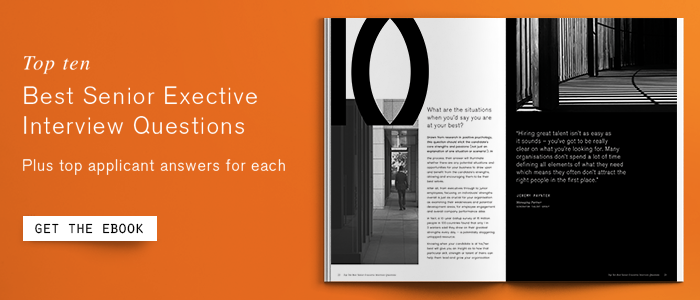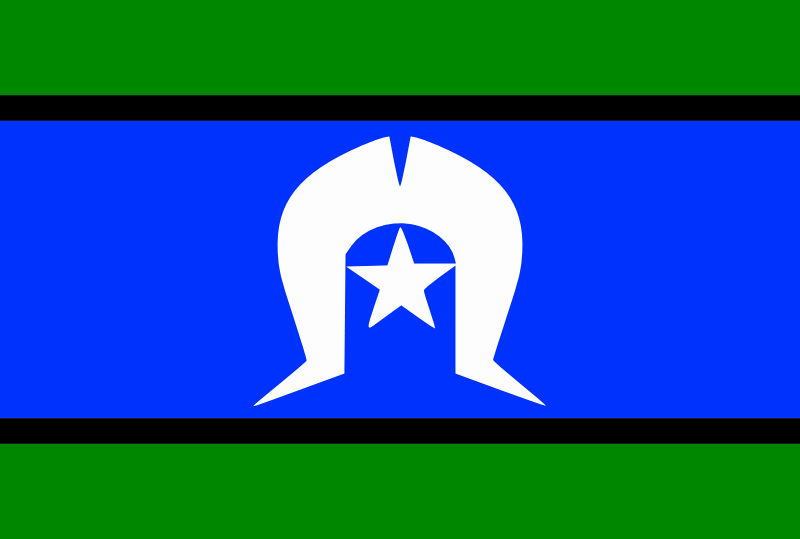02nd November 2016
Our Top Takeaways From The Deloitte HR Trends For 2017
There’s no doubt that technology is rapidly changing the way we work across all kinds of industries and job roles.
For HR professionals, the impacts of technological change on the recruitment industry has been particularly pronounced. With the release of Bersin by Deloitte’s 2016 Perspective Report, the team at Generator Talent have explored how the advancement of technology might influence the state of HR. Based on the latest statistics and trends coming out of the US ― which is usually a strong indicator of what’s in store for the Australian industry ― we’ve rounded up our top takeaways, and highlighted the 9 emerging HR trends you need to know about to prepare for the future of HR.
Our Top Takeaways
There’s a lot to take in from the latest Bersin by Deloitte 2016 Perspective Report. If you don’t have the luxury of time to read it cover to cover (although we highly recommend making the time), we’ve summarised what we think are the key messages that will impact HR professionals.
- HR technology is growing at a fast pace. There are a plethora of solutions being developed; some by external developers funded by companies, others built in-house, and many being built with the support of existing apps and API’s.
- The trend has largely resulted from a shift of Management philosophies from Talent Management to People Management.
- Technology has created seemingly unlimited potential for HR to interact with, and support, an employee’s life at work. The availability and accessibility of these options, along with a general shift in popular management style, has allowed HR to manage staff at an individual level.
- The use of mobile platforms and apps in the HR industry has exploded. As time goes on, HR software will rely increasingly on mobile architecture and cloud technology, despite a slow adoption rate from the industry.
Australians spend on average 10 hours and 24 minutes engaging with their internet connected devices every day with almost a quarter of those surveyed saying they spend more time on their smartphone than they did talking to their partner or friends” – Report by Ernst & Young Digital Australia: State of the Nation (2015-16)
- There has been a shift in focus to how we manage people, with companies now more concerned about staff engagement, teamwork, innovation and collaboration than automating their HR practices.
- There has been a major reinvention of performance management techniques. Companies now understand that feedback and the continual measurement of employee engagement is critical to their success.
- Work-life balance is still an issue, and with workplace culture more fast-paced and globalised than ever before, wellness and emotional fitness are becoming issues of employee performance and engagement.
9 Emerging HR Trends for 2017 According to The Bersin
The Bersin by Deloitte HR Report also explores the nine most influential trends anticipated to affect the HR industry next year. Here we examine those trends, and how organisations can adjust to the changing technological landscape.
1. The Accelerating Revolution of Performance Management
- Performance and job satisfaction improves when employees are given the freedom to be creative, contribute to the business as well as their own goals.
- Leading companies are using this knowledge to better cater to their staff’s growth; creating systems which measure and manage performance in a fashion which provides regular and ongoing feedback to employees at all levels within the organisation.
- This has involved the removal of comparative ratings in favour of assessing individual development, goals and achievements.
Our view: A healthy performance management system should be customised at the organisational as well as individual level. Where possible, managers should support their employees to achieve personal goals, self-motivate and drive their own tasks ― so long as these activities align with the overarching mission and culture of the organisation itself. For this to be effective, it should be underpinned by a clear managerial direction to ensure that, while remaining flexible, individual performance goals stay on track with those of the organisation more broadly.
2. Real-time Engagement Evaluation and its Intersection with Performance and Feedback
- Companies are embracing digital tools which allow them to survey employees more regularly, and obtain deeper insights about their staff. Using this technology, employees feel more comfortable sharing their personal observations and feedback with their employer.
Our view: Part of the role an HR professional plays is to collect feedback from employees about the organisation, by utilising the right surveying and engagement tools. To be of value, this information not only needs to be collected ― it must be analysed and used to form new recommendations and strategies for the business. The emergence of new technologies which help us gather survey data will go a long way towards making this process more efficient, and bridging the talent-management gap. However, managers must be mindful about using that information in a meaningful way once it’s been collected. To ensure your employees remain engaged and willing to interact with new survey technology, they need to see actions taken on behalf of the feedback they give.
3. Growth in People Analytics
- There’s been a shift in data analytics in recent years, from a focus on generating ‘data warehouses’ to actually using that data for predictive modelling. In fact, the latest report suggests that the percentage of HR companies using predictive modelling within their business has doubled over the past three years.
- The most common way for companies to use people analytics in this way is to model when and why people will leave an organisation. For example, Facebook recently announced it would offer employees $10,000 or more if they moved closer to headquarters. This followed research which indicated the importance of commute time in the productivity and retention of their staff.
Our view: The takeaway from this trend is the importance of utilising data, as opposed to collecting and warehousing it with no specific outcome in mind. The latter can be a time consuming endeavour, which offers no real value to the organisation. Instead, when HR managers examine their people analytics, they should have two outcomes in mind:
- to help understand their existing workforce better, so that a more relevant and effective HR strategy can be built; and,
- to continually evaluate their HR practices, and identify areas where improvements can be made.
4. The Evolving Market for Learning
- The corporate learning marketplace is rapidly evolving due to an increasing rate of job change, and new ways of thinking about what learning is. We now consider ‘learning’ to be more dynamic and self-directed.
- New technologies have enabled companies to access internal, customised learning experience platforms. These are being used to curate different types of educational content which match the individual needs of their employees.
Our view: The report highlights how organisations can benefit from implementing a continuous learning model based on what Bersin by Deloitte refer to as the Four ‘E’s ― Exposure, Environment, Education and Experience.This approach focuses on building employee capacity through ongoing education and training, both inside the workplace and outside.
We believe that technology plays a significant role in facilitating this approach, by creating more flexible options and platforms for people to self-educate through. For organisations, it represents a faster and more effective method through which employees can be trained and upskilled in their own time; giving employers the chance to focus more on hiring the right people, and not necessarily the ones who already possess all of the skills required to do the job. After all, business-specific skills and knowledge can be easily learned if the right educational approach is taken, and employees can absorb new information in a way that suits their work-style, responsibilities and schedule.
5. Changes to the Talent Acquisition Process
- $240 billion is reportedly spent per year in the US market on recruitment and talent acquisition. Many commentators believe Australia is trending toward similarly high expenditure within our domestic industry as well.
- The digital age has provided unprecedented public access to company information, employer rankings and salary figures. With websites such as Glassdoor, the talent acquisition market has become increasingly transparent.
- Job boards still have a role in recruitment, but are taking on new formats.
- The applicant tracking market is ripe for change to enable end-to-end recruitment management systems.
Our view: To avoid being left behind the movement of industry-wide change, HR professionals should take full advantage of the new technologies available to them ― which are designed to refine the recruitment workflow as much as possible. But before this is done, managers must look at where their time is best spent; while tools such as LinkedIn and internally built systems are very effective in carrying out some tasks (such as identifying or attracting potential job candidates), other tasks will still require a human element in order to be done properly (such as interviewing). The key is in understanding where technology should be utilised, and separate this from areas which can’t be digitised.
6. Growth in Contingent Workforce Management, Gig Work and Part-time Employment
- In the US, 40% of workers in the US are considered to be employed on a ‘contingent’ basis.
- Increased demand for Contingent Workforce Management systems and ‘gig networks’ (including contractor management) have propelled this growth.
Our view: HR should reconsider the structure of their workforce within a growing marketplace of contingent workers. Is there potential to open up your organisation to alternate employment models such as these, in order to attract the best possible talent? What technologies and systems can be implemented within your organisation to support this shift? If it’s not feasible for your organisation to adopt a new workforce model straight away, consider trialling the use of contingent workers for a specific projects or business phases. Many organisations find that this allows them to maximise their utilisation of resources and enhance overall productivity in the longer term.
7. Merging HR Tools and Team Management
- We’re moving away tools specifically designed to help HR, towards those which help employees work more effectively. Systems such as Workday’s new LMS area designed to help employees find their next position within the company, then identify the training resources relevant to obtaining that role.
Our view: In today’s HR climate there’s no other option than to focus on the client, and proving the talent and support which will facilitate long term success. To do that, HR professionals must be open to new software, systems and processes that could help employees do their job better. In the past, HR took a very inward approach; focusing on recruiting staff that fit a certain mould, and working from a system based on performance outcomes and incentivised rewards. Nowadays, we’re focused more on working to people’s strengths, and how we can maximise these skills to but an HR strategy which not only benefits the individual, but the team and the organisation as a whole.
8. Wellness and Fitness Apps to Improve Employee Engagement
- Companies are putting more and more emphasis on work-life balance, understanding the role it plays in fostering a sustainable workforce.
- As the workplace environment becomes more complex and job roles become more comprehensive (with many employees finding themselves overwhelmed by the diversity of tasks they need to focus on each day), some organisations have turned to technology to help employees manage their workloads.
- For this reason there’s been an influx of wellness and fitness apps, which assist employees to manage their personal work-life balance ― and hopefully improve their level of job satisfaction. For example, employees at Google have access to yoga, work-life balance counselling, dietary support and exercise.
Our view: As much as we try to avoid it, work inevitably seeps into our personal lives. Those working in managerial and executive roles are often the hardest hit; the fast-paced, high pressure environment makes it difficult to avoid burnout. Yet, considering the high costs involved in recruitment, small investments in employee wellness can make a monumental difference to long term staff retention and performance. Work-life balance has long been a lofty ideal for busy professionals. Finally, we’re discovering technological solutions to help employees bridge the gap between the office and the home, in a way which maximises their abilities, The role of HR in this is to identify the right technologies, apps and software tools to get employees to this stage.
9. Digital HR: Self-service, Artificial Intelligence and Robotic Process Automation
- Most HR processes can now be automated. This has shifted the role of HR professionals from manual recruitment activities, to designing and implementing digital HR tools.
- Aided by technology, HR can now focus on employee journey maps and experiences ― in other words, automating the processes for employee career and job transitions.
Our view: Automation technology in HR is not just about plugging in software. To use it effectively, HR managers must take a position of leadership and encourage other individuals, teams and organisations to think about how they might benefit from these tools too. HR can also encourage the uptake of technology by using open-source software and inviting employees and developers to enhance it, holding hack-a-thons, or even designating distinct employee time to ‘innovation using technology’.
Exciting Times Ahead, but Proceed with Caution
The very notion of technology growth in HR means that every part of the HR process is up for disruption. The approach an organisation takes is entirely at the creative whim of the HR department. That said, it’s important to not be cautious with emerging HR trends. Remember: these tools exist to support your organisation’s strategy ― not set its direction. It’s important to set the HR strategy first, remaining open and flexible to new technologies supporting it. Don’t lose sight of your objectives simply because a new gadget is available ― there still needs to be analysis, discussion and engagement before technologies are adopted to ‘solve all problems’.
It’s clear in Deloitte’s report that the identity of the HR industry has evolved. HR professionals are no longer thought of as providing a support function. Instead, successful organisations have incorporated HR executives into the core structure of their business.
Finding the highest quality candidates for these positions is no mean feat. Asking the right questions during the recruitment process can help you secure the best executive talent, increase job satisfaction and ultimately build a better workplace. You may find our guide to the Top 10 Executive Interview Questions useful in this regard. Click the image below to get your free copy.
Categories: General




